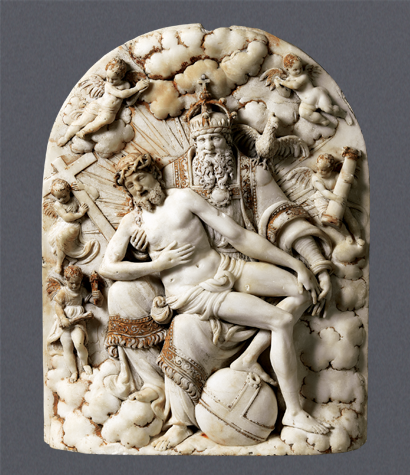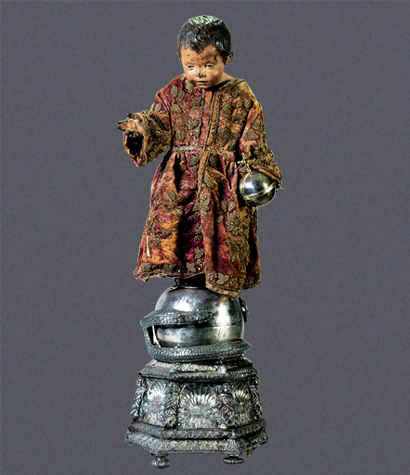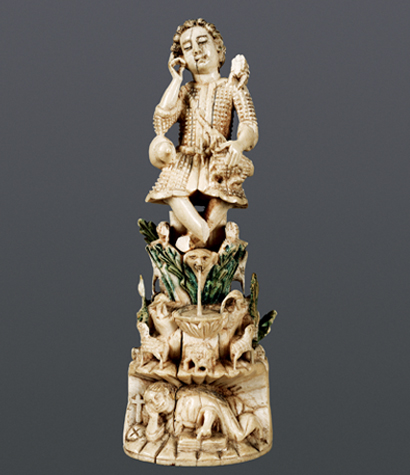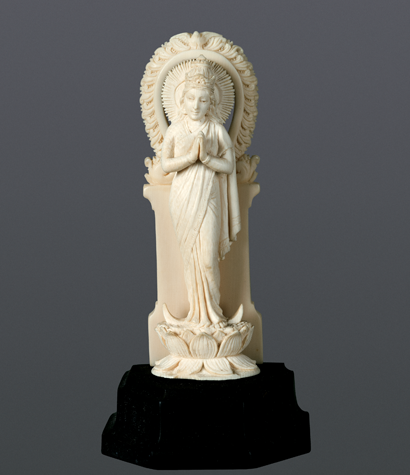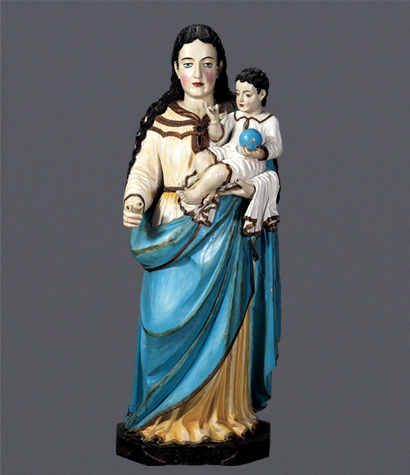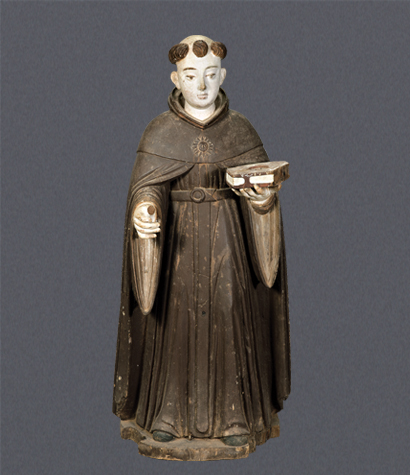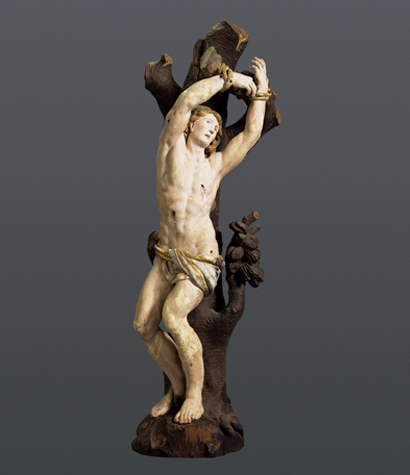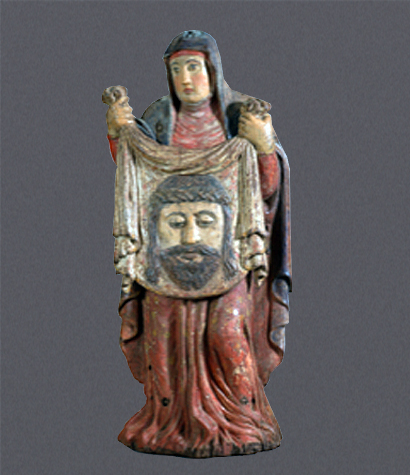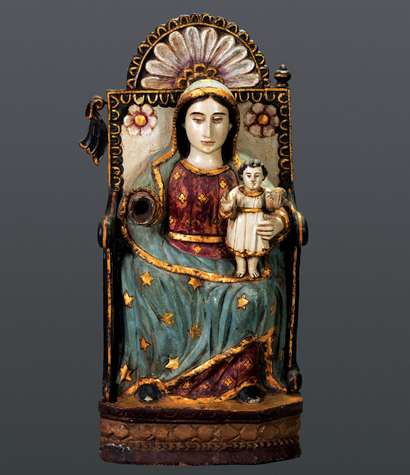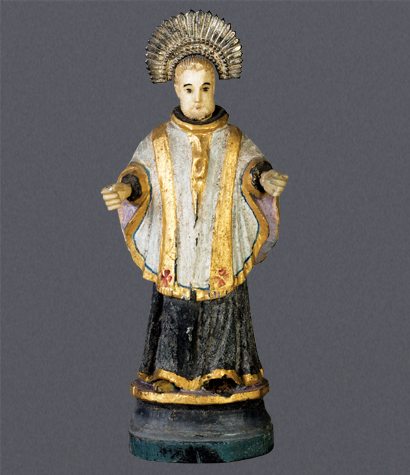
Images of the Apostle of the Indies, St. Francis Xavier (1506-52), beloved to this day, abound in Indo-Portuguese art. This particular statue, given its size, likely formed part of personal devotions in a family oratory over generations.
The saint is European in aspect, with gilded hair and his customary beard. His white chasuble is edged with a narrow piping of blue and a border of gold, with a decorative gold orphrey (band) at the front, and gold trimming around the round collar and the sleeves. Jesuits had no specific cassock of their own; here, the black cassock worn beneath is gold bordered, making it Indian in appearance, but also seen in similar images of the saint in Peruvian art. Over the chasuble he is shown wearing a gold stole whose ends are decorated with red quatrefoils. The stole indicates that the saint’s duties were pastoral rather than liturgical.
On his head, the saint wears a silver crown-like radiating halo in an elongated running arch design. It is decorated with two curving rows of the Indo-Portuguese pearl design below, between which a row of larger pearls is held. In his left hand, given the position of his fingers, he may have held a crucifix, now missing, as also the object held in the right hand. The statue’s pedestal is plain, and painted black, with a very dark green border at its base.
From the same donor, and perhaps family oratory, is a wooden sculpture of Our Lady of the Assumption in the museum’s collection. It also dates to the mid-19th century, and has a similar crown-like halo, indicating that it could have been made by the same artist or workshop.
PUBLICATIONS
Museum of Christian Art, Convent of Santa Monica, Goa, India, Calouste Gulbenkian Foundation, Lisbon, 2011.

